News from New Horizons (continued):
Sputnik Planitia
The light, heart-shaped region on Pluto originally called Sputnik Planum is a glacial basin instead of plain, with a lower elevation than first thought, and has been informally renamed planitia. Possibly formed during a giant impact, it is thin crusted and very dynamic, producing relatively young surfaces through subvection, the sinking down and melting of older material and the welling up and freezing of new materials by flowing glaciers made of frozen nitrogen and methane.
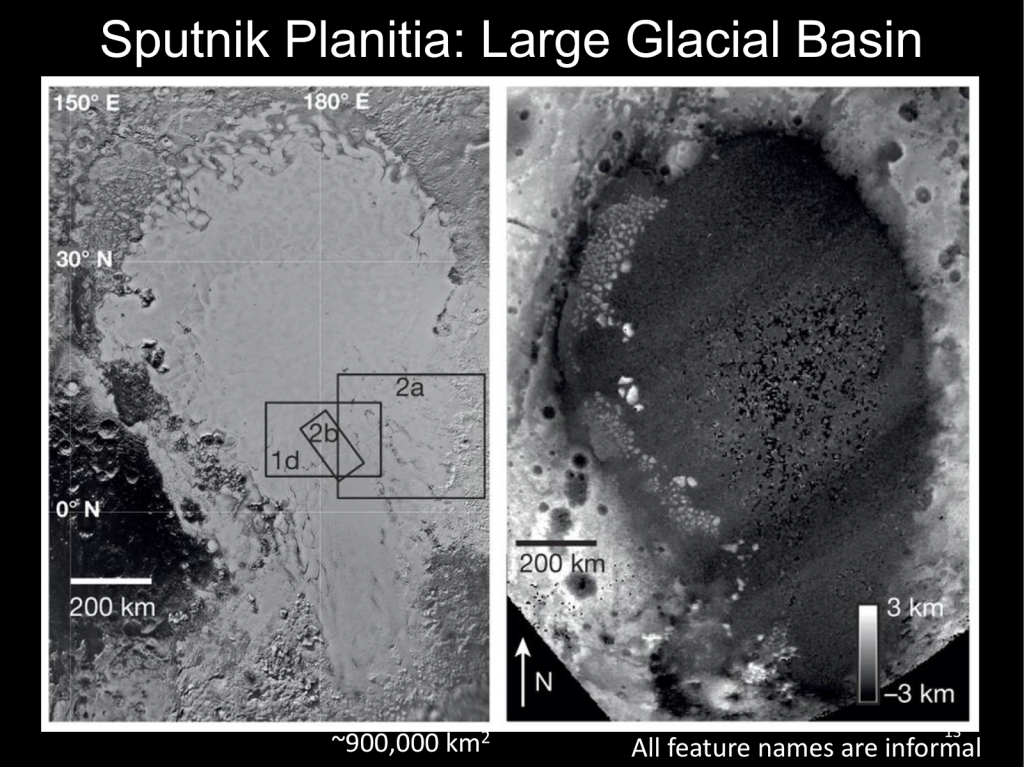
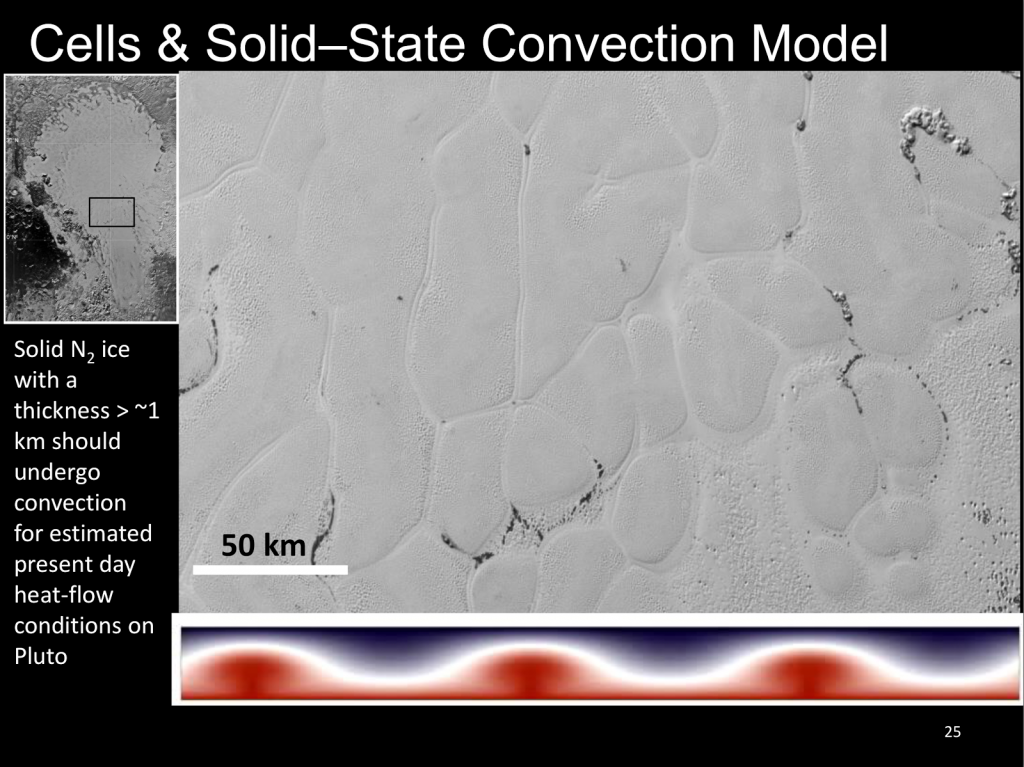
Possible Subsurface Ocean
A subsurface nitrogen ocean within Pluto is hypothesized based on the discovery of possible inactive cryovolcanoes and unusual density of the area beneath Sputnik Planitia. The higher than normal density of the area below its relatively thin crust can be explained by a relatively thicker underground ocean beneath it. The subvection at Sputnik Planitia and the formation of extension stretch marks caused by fractures could have been filled with materials welling up from below support this theory, too.
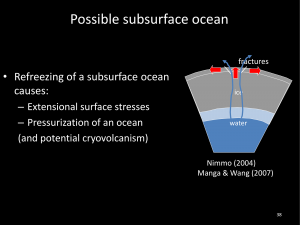
The subvection at Sputnik Planitia and the formation of extension stretch marks caused by fractures could have been filled with materials welling up from a subsurface ocean.
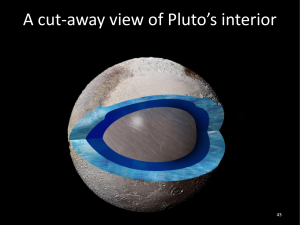
Relatively thicker subsurface ocean under Sputnik Planitia could account for the unusual density of the area beneath Sputnik Planitia
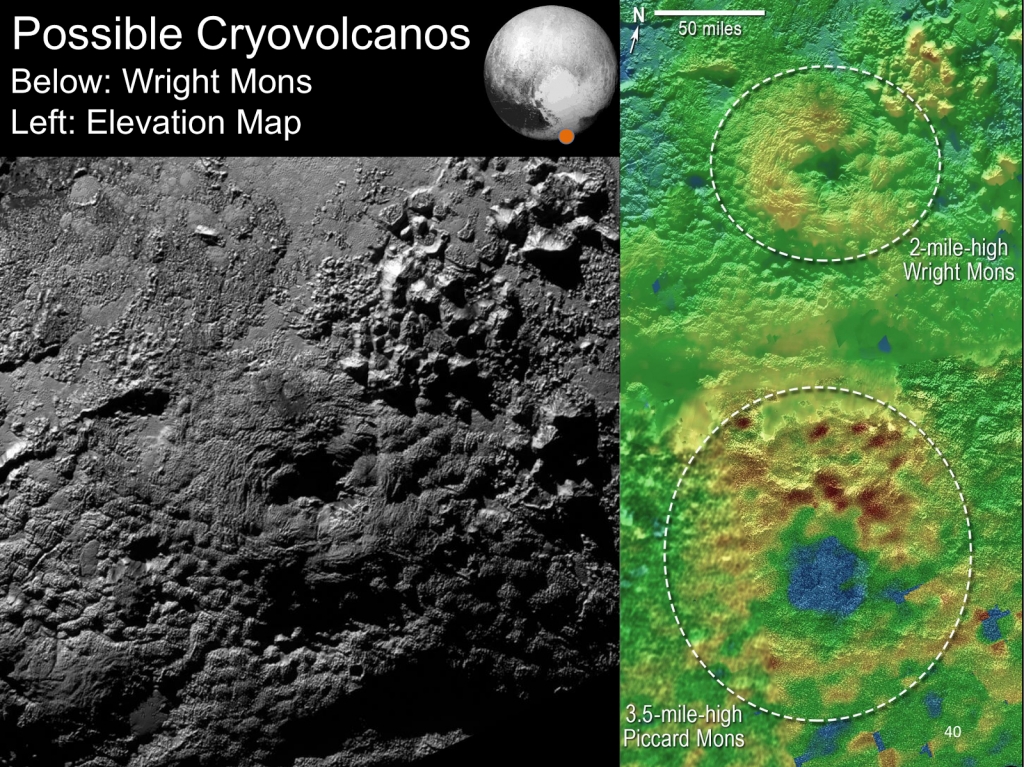
Possible inactive cryovolcanoes that ejected materials from a possible subsurface ocean.
New Horizons’s Next Encounter
Kuiper Belt Object Rendezvous Set for Jan 1, 2019
The extended mission includes traveling a billion miles from Pluto to fly by 2014 MU69, a Kuiper Belt Object that is 44 AU from Earth and 22-40 km in diameter–about the size of Cape Cod Bay. Enroute New Horizons will observe the Sun and Kuiper Belt Objects from perspectives that we don’t see from Earth before it goes into hibernation on the last leg of its extended mission. The nuclear fuel in New Horizons could last until 2040, so additional extended missions are possible.
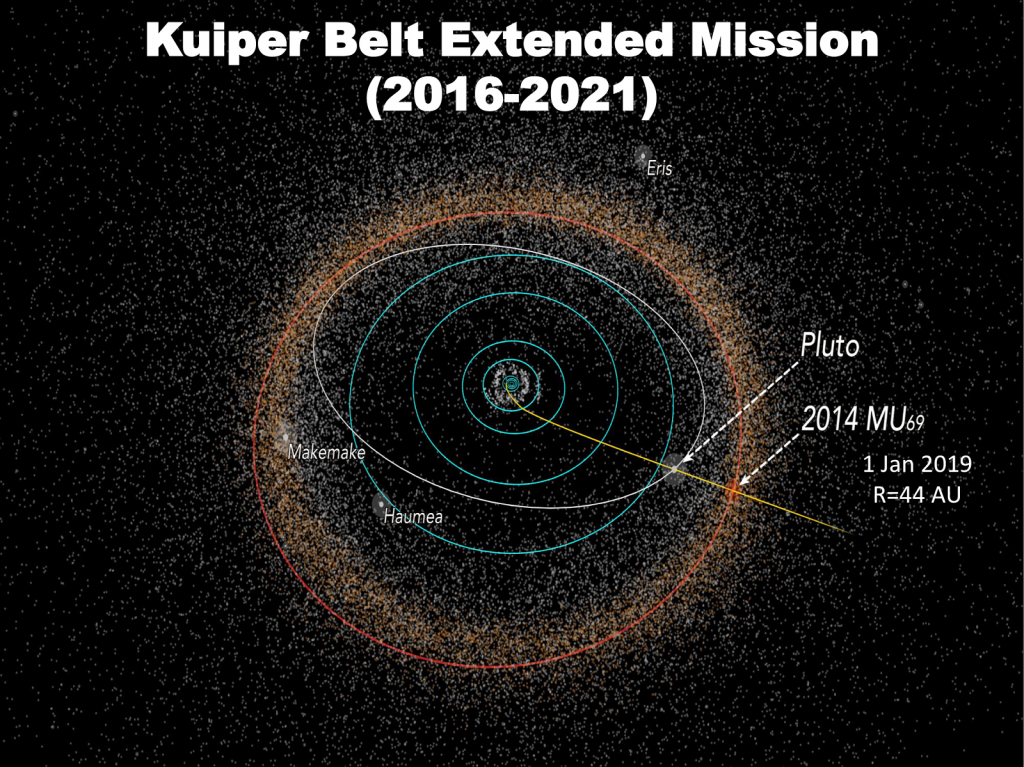
Extended mission includes traveling a billion miles from Pluto to fly by 2014 MU69 a Kuiper Belt Object 44AU from Earth
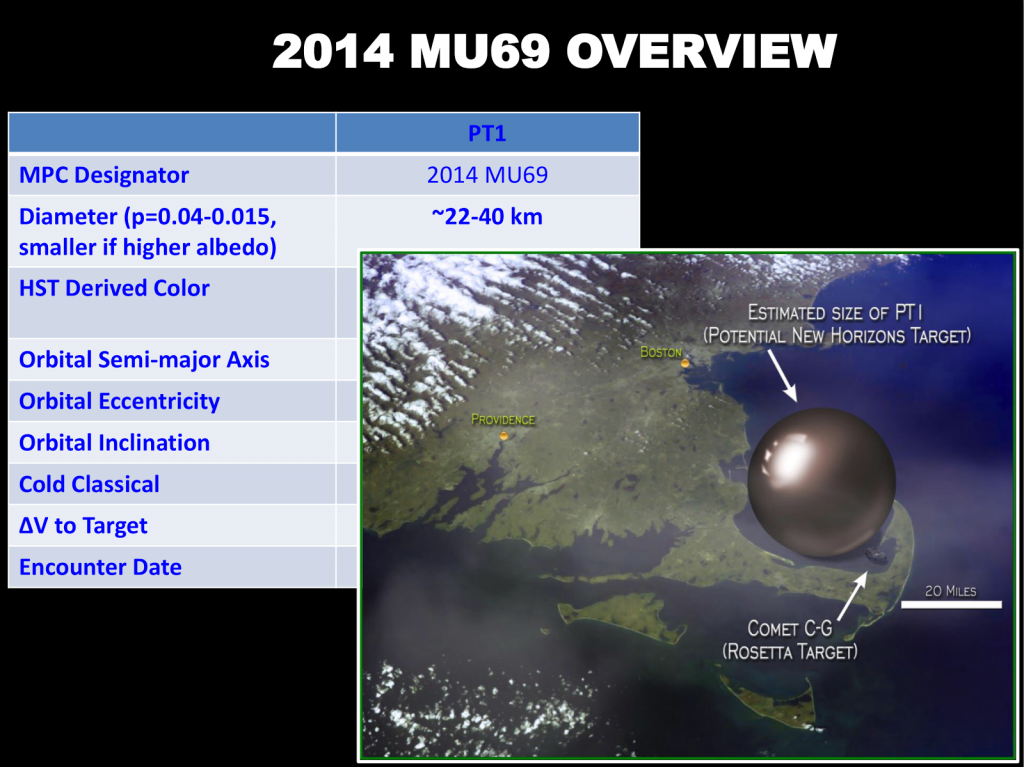
2014 MU69 is about the size of Cape Cod Bay
For the latest findings of New Horizons, see the mission Website at
https://www.nasa.gov/mission_pages/newhorizons/main/index.html
and the John Hopkins mission site at http://pluto.jhuapl.edu/index.php
